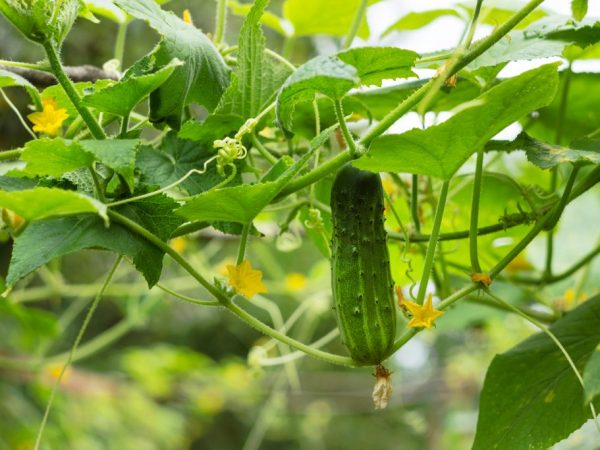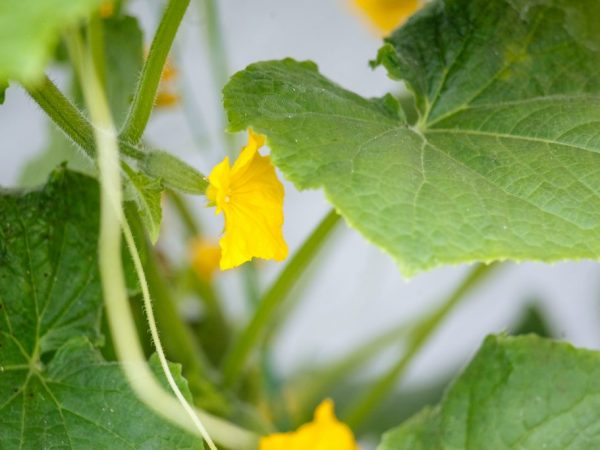Description of the variety of cucumbers Masha
The most popular among high-yielding early-ripening hybrids is the Masha cucumber variety. The combination of attractive appearance and excellent taste makes the variety attractive to many farmers. The main feature of the species is good preservation of external data and taste after collection.

Description of the variety of cucumbers Masha
Characteristics of the variety
The country of origin of the seeds is Holland. There is a note on the packages with the product description that the seeds do not need to be pre-treated with disinfectants because the planting material has already been treated by the manufacturer. Dutch breeders gave our farmers the opportunity to grow a quality product in greenhouse conditions and in the open field of the southern regions.
Cucumber variety Masha f1 is a self-pollinated hybrid of the first generation. The characteristic of biological characteristics describes the first generations of plants from two parental species, as highly resistant to diseases, characterized by good endurance, high-yielding specimens. It is important to remember that the seeds that F1 hybrid gives are not suitable for growing. During subsequent cultivation, the plants do not retain the properties of the parental species.
When all agrotechnical rules are fulfilled, you can get from 1 branch to 5 zelents. From 1 m2, 15 kg of cucumbers can be harvested when grown in greenhouse conditions. In the open field, the yield is slightly less - 10-12 kg per 1 m2. Fruits ripen 36 days after germination
Description of the plant
Cucumber Masha f1 - a description of the features of the appearance of the plant:
- determinant bush;
- the growth of the main stem is limited by the inflorescence;
- shoots are poorly formed, which simplifies the formation of bushes;
- there can be up to 7 ovaries in a knot;
- foliage is green, medium-sized, wrinkled.
Description of the fetus
Masha cucumbers have a cylindrical shape. The structure of the skin is pimply, dense. The mass of greenery is 90-100 g. The length of the fruit is 11 cm. Cucumbers of our Masha variety, according to the manufacturer's description, are included in the State Register of Russia as a universal species that can be used for preservation and salads.
The pulp has a pleasant aroma. The taste is sweet, without bitterness. When salted, Baba Masha cucumbers do not lose their elasticity, remain crispy, without forming a void inside.
Benefits
Cucumbers Masha f1 are resistant to the following diseases:
- cladosporium disease;
- cucumber mosaic virus;
- powdery mildew.
Masha cucumber is great for pickling and fresh consumption. Possesses a lot of useful properties. It is a dietary product. Its high yield makes it attractive to many farmers in our country.
disadvantages
Among the shortcomings, the following points are noted:
- the inability to independently propagate plants from the seeds obtained;
- loss of taste, with untimely harvesting;
- the impossibility of growing outdoors in the northern regions.
Growing
Planting cucumbers Maria F1 is simplified by the manufacturer.The seeds do not require additional disinfection and soaking before planting. All that remains for farmers is to find a suitable site and take proper care of the plants. The variety is quite capricious and therefore not every site is suitable for growing it.

For a plant, you need to choose the right site
The landing area should be well lit, not blown by the winds. The plant bears fruit well on light soils enriched with humus, with a low acidity. The soil begins to be prepared in the autumn. You need to take care of thorough cleaning of plant residues, dig up the site and add organic matter.
It is possible to increase yields with strict adherence to the rules of crop rotation.
Then you can plant
Best predecessors for Mary:
- potatoes;
- bow;
- tomatoes;
- cabbage;
- winter crops;
- wheat;
- legumes.
It is strictly forbidden to plant the variety after beets and zucchini. These plants extract all the nutrients from the soil necessary for the full development of the culture. Planting is carried out only when the soil is fully warmed up in late May and early June. If you neglect these rules, seedlings will develop slowly, as a result, yield will decrease.
Landing
The seeding pattern depends on the location of the shoots and stems. Distinguish between vertical and horizontal fit. With the vertical version, 3 bushes are planted per 1 m2, with the horizontal - 4-5 bushes. Seeds are sown to a depth of 3-5 cm in 15-20 cm increments.
Growing by seedling method involves planting in separate pots, in pre-disinfected soil from peat, fertile soil and sawdust. Otherwise, germination of seedlings is no different from other varieties and is carried out using the standard method. Planting in glasses is carried out to a depth of 1.5 cm. Seedlings dive into open ground or a greenhouse when 3-4 healthy leaves appear. Before transplanting, the seedlings must undergo a hardening procedure.
Care
Cucumber Masha, like other types of cucumber crops, loves moisture, so it should be watered often and abundantly. Watering is carried out early in the morning or in the evening, when the sun has almost gone down. Drip irrigation is ideal. With standard watering, soil moistening should be carried out every 2 days. Do not pour liquid under the root, so as not to damage it.
Proper care of cucumbers involves regular loosening of the soil. Do not cultivate too deeply, otherwise there is a risk of damage to the rhizome. The procedure allows you to organize proper nutrition and eliminate weeds. Hilling of the stems should be carried out 2 times per season. The first time when 4 leaves appear, the second when the plant reaches 20 cm in height.
Top dressing is carried out for the first time when 2 leaves appear. Then the procedure is repeated at intervals of 2 weeks. Top dressing is carried out with infusion of manure with ash.
To achieve good results, you need to carry out pinching on time, forming a crown. You need to pinch the shoots, whiskers and ovaries at the bottom of the plant. In the axils above 4 from the bottom of the leaf, you should leave 1 ovary with a leaf. In 10-12 sinuses, 2 ovaries with 2 leaves are left, respectively, in 12-16, 3 ovaries with 3 leaves are left.
Don't forget about the garter. For this, tapestries are used. This move avoids the appearance of fungal diseases.
Diseases and pests
Cucumber Masha f1 is quite resistant to many diseases typical for cucumber crops, but if the rules of care are not followed, it can be exposed to white rot, anthracnose, downy mildew. For any of the above diseases, it is recommended to immediately remove the damaged shoots, treat the ground part with Bordeaux liquid or 1% copper sulfate solution. Treatment with the drug Fundazol is practiced.
Of the pests, the enemies of the variety are melon aphids, thrips, slugs, spider mites. Prevention is compliance with the rules of crop rotation.As a treatment, treatment with tobacco dust, pepper infusion, Fitoverm is used.
Conclusion
Cucumber Masha f1 is a high-yielding hybrid of Dutch selection. It is a versatile variety. Planting and growing the species is practically no different from other cucumber crops - this is evidenced by the characteristic.
Subject to all agrotechnical rules, from 1 bush you can get up to 10 kg of greens. A big disadvantage is the impossibility of growing crops in the open field in the northern regions. But, this problem can be solved, and a good harvest can be grown in greenhouse conditions or at home on a windowsill.


